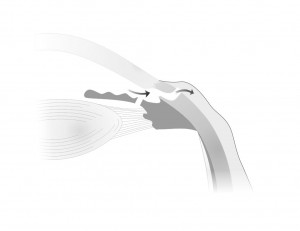Below you will find several “true or false” statements about glaucoma, along with a detailed explanation:
-
“Glaucoma is a hereditary disease. Hence, if my mother suffers from glaucoma it is 100% certain that I will also develop the disease sometime in the future.”
-
“Every person diagnosed with glaucoma will undergo glaucoma surgery at some point in their life”
-
“Most glaucoma patients don’t sense their disease at all. That is the reason why it is possible that a person might have glaucoma for over 10 years without knowing about it, and without even suspecting that something might be wrong.”
-
“It is possible to prevent glaucoma by exercising regularly and keeping a proper diet”
-
“Although the visual-field test is entirely dependent on the patient’s ability to press the button at the right moment, and on keeping his/her concentration during the test, it is still considered a very accurate test, important and credible for diagnosis and follow up of glaucoma patients.”
Consequently, the vast majority of patients with glaucoma never sense the presence of this disease. If so, how are glaucoma patients diagnosed? My answer is that most of them were diagnosed as an incidental finding during an eye exam performed by their ophthalmologist, usually when they were tested for reasons not related to glaucoma. Some have come to the attention of an ophthalmologist to be checked up for fitting glasses, others suffer an eye infection, or merely came for a routine checkup. Still others might approach an eye doctor because they have a relative known to have glaucoma, or because they happened to have read this website. In contrast, a large proportion of glaucoma patients remain totally unaware of their disease. That is why it isn’t rare that when a patient is diagnosed with glaucoma, he/she had already had it for a great many years (or even decades!).
Only two things have been found significant in relation to glaucoma: early diagnosis of the disease, and consistent, orderly care for the disease, so that the pressure is constantly kept at the minimal possible level, with as few spikes of high pressure as possible, spikes that may slowly (but surely) harm the optic nerve.
I will start by pointing out the many disadvantages of a visual field test: the test is subjective and cannot be performed without full cooperation from the patient. Patience and concentration are key qualities for the test’s success, which is precisely who so many of my patients hate taking it. Many reasons conspire to the discomfort caused during the test: the conditions in the examination room include darkness, sometimes in a small and stifling room, there might be a feeling of claustrophobia (fear of closed spaces), the eye patch covering one eye is often uncomfortable and even irritating, and worst of all: the test is boring, long and difficult to execute. In addition, most glaucoma patients are over 60 (some may even approach 90!) and their vision is usually not perfect (due to, for example, cataract, glaucoma or retinal conditions). On top of all these reasons there is the real anxiety that the visual field had gotten worse in comparison to the previous test. If so, why even bother doing the test?
My answer is that despite all of its disadvantages this is the most accurate test we have to diagnose and quantify damage to the field of vision. There are a few additional tests used to quantify glaucomatous damage (for example imaging tests like OCT and GDx, that can complete the diagnosis), but such tests do not replace, but merely enhance, the time-honored visual-field test.
I hope I have managed to convince you why it is so important to perform this test when your eye doctor asks you to (usually every 4-12 months). The good news are that today we have algorithms (testing methods) which shorten the length of the visual-field test significantly, up to half the time it used to take to perform this test in the past. This shortening is mostly a result of a much faster and smarter computer installed inside the device, which is able to calculate and extrapolate the interim results of the test relying on a much smaller number of lights projected during the test.
A small piece of advice for all those who hate taking the test: by a prolonged push on the button, without letting go, you can make the test pause for as long as you want, until you let the button go. This way, if you get tired, lose your concentration, wish to change the height of the seat, fix your eye patch or rub your closed eye, all you need to do is continually push the button until you are ready to continue the test. However, if you do press the button in order to pause the test (as explained above), do let the technician know that you have done so, or else she might worry that the machine has broken down…



